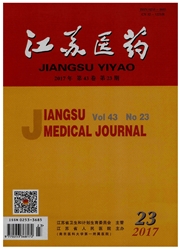

 中文摘要:
中文摘要:
目的探讨软组织CT测量在重度阻塞性睡眠呼吸暂停低通气综合征(OSAHS)患者上气道评估中的应用价值。方法依据睡眠呼吸暂停低通气指数(AHI)将70例重度OSAHS患者分为A1组(48例,30次/小时≤AHI〈70次/小时)和A2组(22例,AHI≥70次/小时);依据每小时睡眠呼吸暂停低通气时间(AHIT)分为B1组(35例,AHTI〈30min/h)和B2组(35例,AHTI≥30min/h);依据氧减指数(ODI)分为C1组(34例,30次//b时〈ODI≤60次/小时)和C2组(36例,ODI〉60次/小时)。比较各组上气道软组织CT测量参数。结果与A1组相比,A2组软腭后区左右径、截面积较小(P〈0.05);与B1组相比,B2组软腭后区左右径、截面积较小(P〈0.05);与C1组相比,C2组软腭后区和舌后区的左右径和截面积较小,软腭长度较长(P〈0.05)。结论软组织CT测量不仅可定位OSAHS患者上气道的阻塞部位,同时还可评估患者的病情轻重。
 英文摘要:
英文摘要:
Objective To investigate the significance of soft tissue measurement of upper airway by CT in patients with severe obstructive sleep apnea-hypopnea syndrome(OSAHS). Methods According to sleep apnea hypopnea index(AHI), 70 patients with severe OSAHS were divided into groups of A1 (30 times/h≤AHI〈70 times/h, 48 cases) and A2 (AHI≥70 times/h, 22 cases). According to sleep apnea per hour hypopnea time (AHIT), those were divided into groups of B1 (AHTI〈30 rain/h,35 cases) and B2(AHTI≥30 min/h,35 cases). According to oxygen desaturation index(ODD,those were divided into groups of C1 (30 times/h〈ODI≤60 times/h, 34 cases) and C2 (ODI〉60 times/h, 36 cases). The CT parameters of soft tissue measurement of upper airway were compared between groups of A1 and A2, B1 and B2, C1 and C2. Results Compared with groups of A1 and B1, the left-right diameter and sectional area in retropalatal were smaller in groups of A2 and t32 (P〈0. 05). Compared with group C1, the the left right diameter and sectional area in retropalatal and lingual region were smaller and the length of the soft palate was longer in group C2 (P〈0.05). Conclusion The measurements of soft tissues in upper airway by CT in patients with severe OSAHS not only may locate the area responsible for airway obstruction, but also is helpful in evaluating the severity of OSAHS.
 同期刊论文项目
同期刊论文项目
 同项目期刊论文
同项目期刊论文
 Epithelial-Mesenchymal Transition Regulated by EphA2 Contributes to Vasculogenic MimicryFormation of
Epithelial-Mesenchymal Transition Regulated by EphA2 Contributes to Vasculogenic MimicryFormation of 期刊信息
期刊信息
